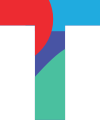How to integrate the SDGs into your development project
March 22, 2019
What are SDGs and why are they important?
The Sustainable Development Goals (SDGs) formulated in 2015 are the world’s best shared plan to end extreme poverty, reduce inequalities, promote health and employment, protect the planet and ensure peace and justice by 2030.
Using a variety of innovative approaches, organisations, social enterprises, foundations, CSR departments, or even for-profit businesses, regardless of their size or purpose can integrate principles and practices of sustainable development into their organisation structure and work models. Good news is, many organisations have already begun.
We believe doing this will have a significant impact on the purpose of your organisation. It will foster an ethical approach and galvanise a shared value within the organisation and amongst all stakeholders. SDGs can also act as a catalyst for innovation, engage and motivate employees, leverage your key resources and open up new opportunities.
Challenges and opportunities
Adapting the SDGs into your own work structure is definitely a great way to make a positive impact, but it is not devoid of challenges. Achieving the goals by 2030 will require valorous and innovative efforts both on micro and macro levels, a strong commitment to transform aspirations into real implementations and an ability to quickly adapt to new information and evolving trends to optimise processes. But most importantly, it requires a proper monitoring and evaluation process – a comprehensive system to effectively measure interventions to learn about what works and what doesn’t and what could be improved.
TolaData and SDGs
As part of our commitment to the SDGs, TolaData assists organisations like yours to not just integrate the SDGs into your own org structures, but also ensure that your project is monitored and evaluated properly to help you achieve your program goals.
Let’s get into the technical part of the process. So, where do you start? Once you have drawn out the project foundation on TolaData and you have a grasp of the overall scope of your interventions, you can simultaneously lay out the groundwork for your M&E process in the system.
This could be achieved by building a ‘results framework’ on TolaData. The results framework helps to visualise your program structure with different levels (such as input, output, outcome, impact) within the program and the flow of changes that you intend to deliver through each level in order to achieve your overarching program goal.
We mentioned earlier that the success of the SDGs and your own project relies heavily on how you measure your intervention. But the question is – how can you measure the flow of changes in TolaData? The answer is – ‘Indicators!’ Our monitoring and evaluation software supports your organisation to build an indicator plan that aligns with each level of your results framework.
What is an end-to-end indicator plan?
It is an effective way of managing and utilising your data and performance indicators to successfully measure your program interventions at different stages of your project cycle. In TolaData, you can easily build a coherent indicator plan – add new indicators, edit or delete existing ones and drag and drop indicators to organise them under different levels in the results framework. But, most importantly, the system allows you can collect quality data using our form-builder or multiple online or offline data collection platforms and brings all your data under one roof to track your indicators.
A combination of high-quality data and a good indicator plan helps you to track project performance and targets on different levels in an integrated, clear, and constructive manner. You can thus get a good overview on your performance and developments, identify areas for increased attention, develop appropriate implementation strategies, allocate resources effectively, make data-informed decisions, ensure the accountability of all stakeholders and discover opportunities for upscaling.
What do good indicators look like?
Sometimes, it could seem quite difficult to determine the right type of indicators for an intervention, and given the fact that indicators are the backbone of M&E, the task becomes all the more challenging.
According to M&E experts at TolaData, one good practice approach is to adopt the SDG targets and indicators. You could choose from the 169 targets and 232 SDG indicators. The indicators have been divided into four categories – ‘functional indicators,’ ‘economic indicators,’ ‘environmental indicators,’ and ‘socio-cultural indicators.’
But every project is different, so you would need to take extra caution while determining which targets and indicators best suit the scope of your program and interventions. It is also possible that you may not find your exact indicator match, but in that case, you can always modify the SDG indicators to fit your program requirements.
Furthermore, M&E experts also add that before you formulate an indicator or adopt one from the SDGs, it is essential to know some key features that make up for good indicators. According to them, all indicators should be simple, intuitive, measurable, policy-relevant, consensus-based and able to be disaggregated to track full progress for all relevant groups. In TolaData you have the ability to add disaggregations and conditions to your indicators for analysing your results in broader perspective. Also, indicators on TolaData can be of numeric or percentage value.
We hope our article has shed some light on how your organisation can contribute to the SDGs, while ensuring a good performance of your own project. Please do let us know your thoughts on this topic!
Article by: Chandani Lopez Peralta, Content Marketing Manager at TolaData.

